Lead-Free Ammunition Saves Waterfowl
Air Date: Week of October 31, 2014
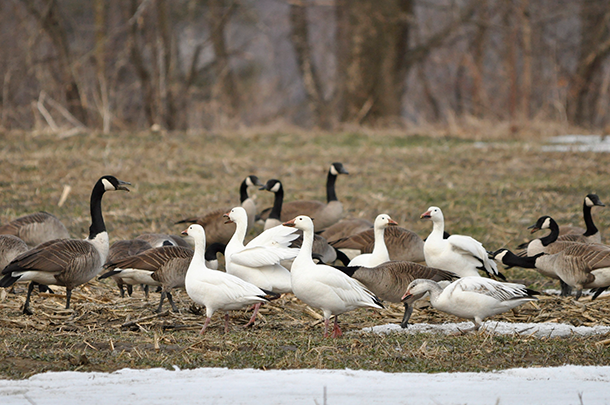
Foraging geese (Photo: © Putneypics)
Migrating waterfowl are often hunted in the fall, and the birds often swallow shotgun pellets that miss. But now, as Mary McCann reports, hunters no longer use toxic lead pellets, which helps protect the health of surviving waterfowl and their ecosystem.
Transcript
CURWOOD: It's Living on Earth, I'm Steve Curwood.
[MUX - BIRDNOTE® THEME]
CURWOOD: Across the globe as the seasons change the vast flyways are thronged with migrating birds. And as Mary McCann explains in this BirdNote®, one fall ritual in US marshes and other wetlands is now in the main, less toxic, though not necessarily less deadly.
BirdNote®
Waterfowl and Lead
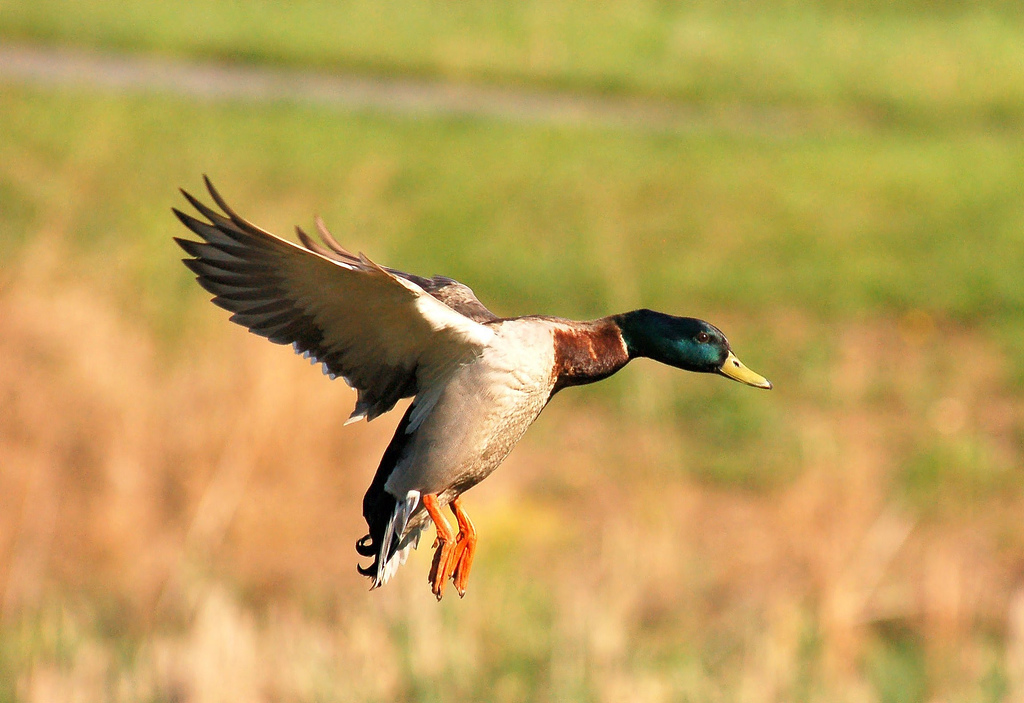
Male Mallard lands in a field. (Photo: © Joby Joseph)
[Calls of Canada Geese, Trumpeter Swans, Mallards]
MCCANN: Every autumn, millions of ducks, geese, and swans return south from remote northern breeding grounds to winter in temperate North America.
[Calls of Canada Geese, Trumpeter Swans, Mallards]
MCCANN: And every autumn, the long-standing tradition of waterfowl hunting is reenacted.
[Individual Mallard]
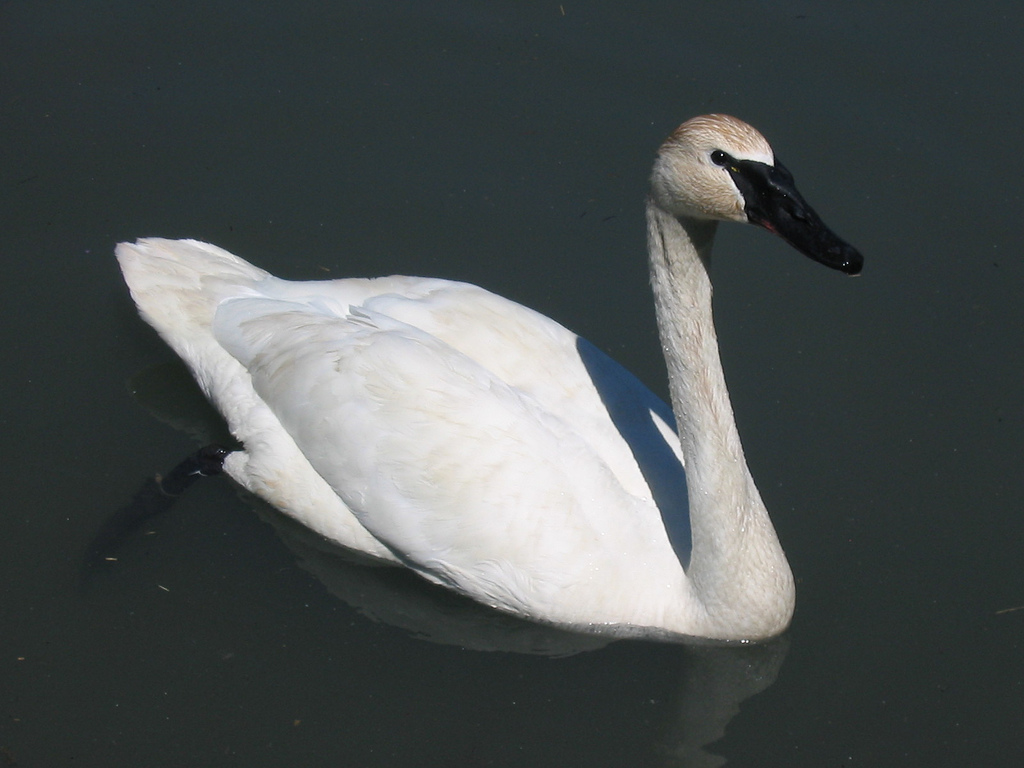
Trumpeter Swan (Photo: © Mark Witten)
But one important feature of that hunting tradition has changed. Beginning in 1991, waterfowl hunters were required to switch from lead shotgun pellets to pellets made of non-toxic metals.
In the past, foraging ducks, geese, and swans often ingested lead shot that had fallen to the ground. Waterfowl must swallow hard particles so their gizzards can grind up hard foods, like grains. Unfortunately, they can’t tell a lead pellet from a small pebble.
[Male Mallards]
Even two pellets of lead in a duck’s digestive system can cause a slow death from the effects of lead poisoning. Many birds were affected. The switch to non-toxic shot has made a positive difference for waterfowl.
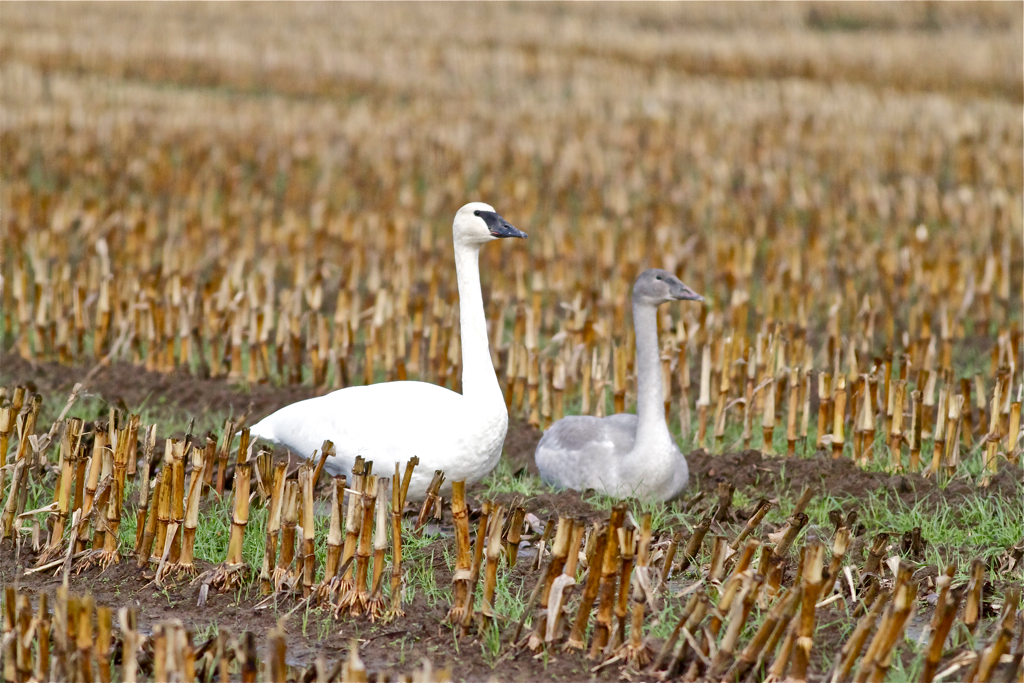
Adult and immature Trumpeter Swan forage in a field. (Photo: © Jerry McFarland)
[Male Mallards]
But lead shot is still widely used for the hunting of gamebirds like pheasants, which often share areas used by waterfowl.
South Dakota now requires non-toxic pellets for all small game-hunting and even target-shooting. And hunters elsewhere who are concerned about conservation, have made the switch to protect the future of the birds, the habitat, and the tradition they value.
[Calls of Canada Geese and Trumpeter Swans]
I’m Mary McCann.
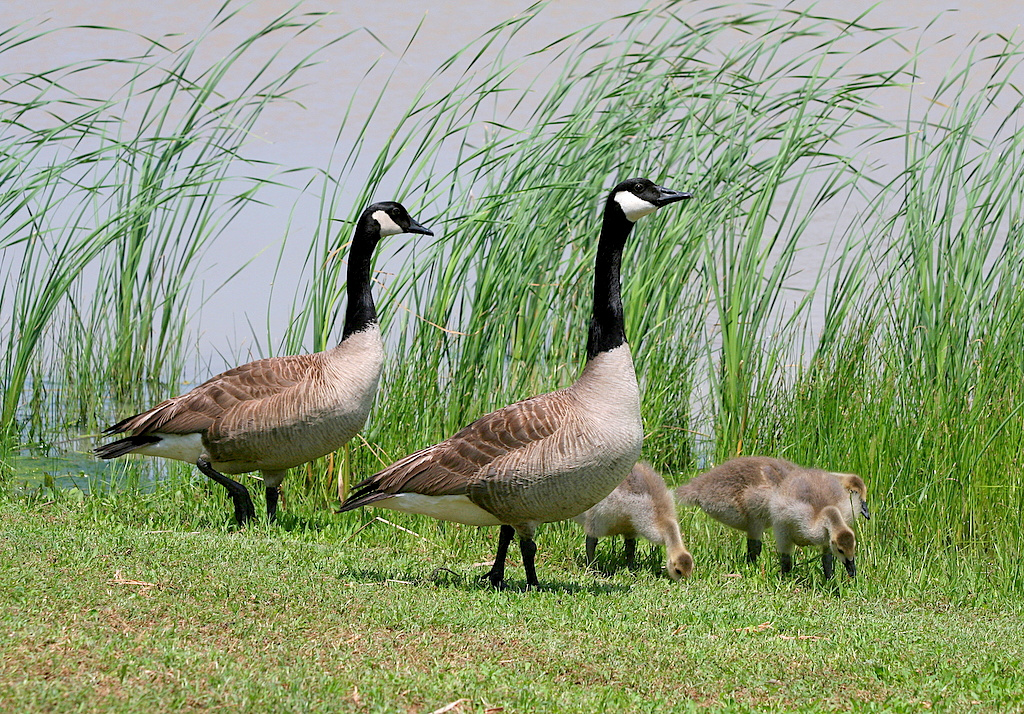
Canada Goose family (Photo: © Ken Slade)
###
Written by Bob Sundstrom
Bird audio provided by The Macaulay Library at the Cornell Lab of Ornithology, Ithaca, New York. Canada Goose calls recorded by W.W.H. Gunn. Trumpeter Swan calls recorded by J.M Hawthorne. Mallard calls recorded by A.A. Allen.
Producer: John Kessler
Executive Producer: Dominic Black
© 2014 Tune In to Nature.org October 2014 Narrator: Mary McCann
http://www.abcbirds.org/abcprograms/policy/toxins/lead-fact-sheet.html
CURWOOD: You’ll find photographs of ducks and geese and swans at our website, LOE.org.
Links
Living on Earth wants to hear from you!
Living on Earth
62 Calef Highway, Suite 212
Lee, NH 03861
Telephone: 617-287-4121
E-mail: comments@loe.org
Newsletter [Click here]
Donate to Living on Earth!
Living on Earth is an independent media program and relies entirely on contributions from listeners and institutions supporting public service. Please donate now to preserve an independent environmental voice.
NewsletterLiving on Earth offers a weekly delivery of the show's rundown to your mailbox. Sign up for our newsletter today!
 Sailors For The Sea: Be the change you want to sea.
Sailors For The Sea: Be the change you want to sea.
 The Grantham Foundation for the Protection of the Environment: Committed to protecting and improving the health of the global environment.
The Grantham Foundation for the Protection of the Environment: Committed to protecting and improving the health of the global environment.
 Contribute to Living on Earth and receive, as our gift to you, an archival print of one of Mark Seth Lender's extraordinary wildlife photographs. Follow the link to see Mark's current collection of photographs.
Contribute to Living on Earth and receive, as our gift to you, an archival print of one of Mark Seth Lender's extraordinary wildlife photographs. Follow the link to see Mark's current collection of photographs.
 Buy a signed copy of Mark Seth Lender's book Smeagull the Seagull & support Living on Earth
Buy a signed copy of Mark Seth Lender's book Smeagull the Seagull & support Living on Earth

